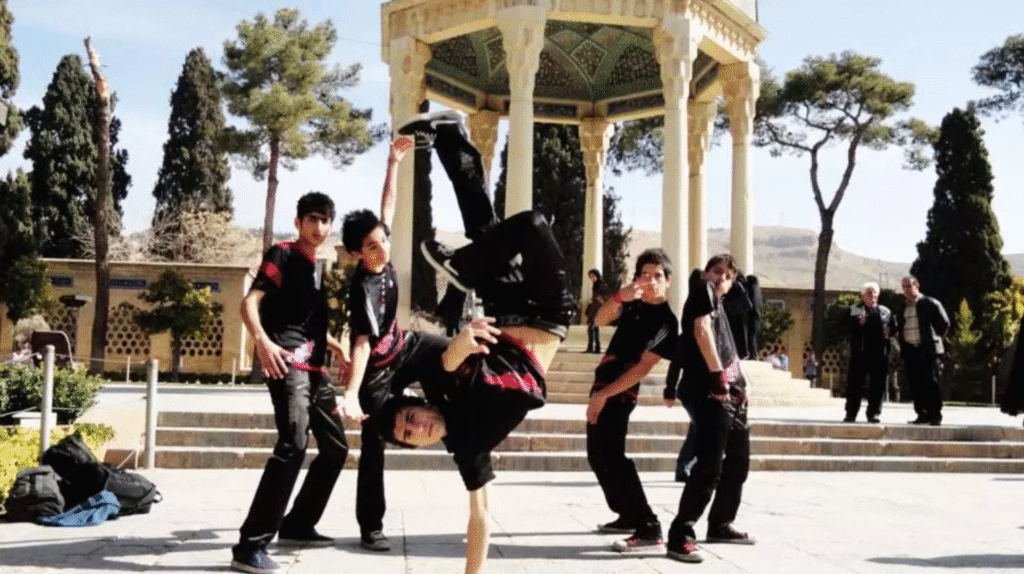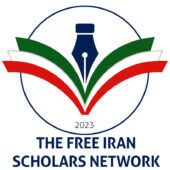By Dr. Aziz Fooladvand, Sociologist and Scholar of Islamic Studies
This is a translation of the original article in German.
7-20-2025

Iran’s younger generation is undergoing a radical transformation. This change is cultural, political, and social. Increasingly, it is turning its back on the authoritarian value system of the religious state and confidently forging its own path. In a country marked by repressive norms and a strict theocratic order, a youth is rising that seeks self-determination, freedom, and equality.
This movement is not loud in the traditional sense. But it is brave, determined, and deeply transformative. Iranian youth, in the spirit of philosopher Immanuel Kant, have become enlightened. They have freed themselves from “self-imposed immaturity,” think critically, challenge power structures, and reject obedience to authorities they no longer consider legitimate.
A New Generation with Clear Values
This generation believes in democracy. It is open to the world and shaped by humanist ideals. They support gender equality, defend animal rights, and actively engage in civil society despite intense repression. While the regime enforces control, conformity, and oppression, the youth embrace creativity, individuality, and freedom.
In their daily lives, they dance, listen to banned music, create underground art, and share their thoughts on social media. This happens even when platforms are blocked. They find ways to bypass censorship, build networks, and make their voices heard. Often, they risk their freedom or even their lives.
A Deep Divide Between Generations
A wide gap separates this rebellious youth from the ruling mullahs. It is not just a generational rift. It is a fundamental clash between two worldviews. On one side stands an authoritarian religious state built on control, dogma, and submission. On the other stands a generation that longs for openness, diversity, and pluralism.
The Courage to Change
What defines this youth is its courage. Despite surveillance, threats, and violence, they stand up for their beliefs. They represent a new hope for Iran. A hope for a nation that can honor its rich cultural heritage without being trapped in it. A hope for a future-oriented country that looks forward rather than backward.
This generation is not passively waiting for change. It is the force of resistance today. Their strength lies in the conviction that change is possible through education, solidarity, and an unwavering belief in freedom. The Iran of tomorrow is already taking shape through ideas, music, art, digital expression, and the bold voices of a principled generation.
Cultural Resistance: Defying the Mullahs’ Dogma
For nearly fifty years, the Iranian regime has tried to impose a rigid worldview on society, especially the youth. Thousands of religious institutions, media outlets, films, education programs, and a massive security apparatus have been used to entrench theocratic ideology. But these efforts have largely failed, especially with younger generations.
Resistance Through Everyday Culture
The resistance is not only found in street protests. It lives in daily acts of defiance—in fashion, music, language, digital spaces, art, and even religious rituals. This is a quiet, yet powerful protest. It is a form of cultural self-assertion that rejects authoritarian values.
Young Iranians reject the regime’s religious language and symbols. They invent their own ways to express themselves through graffiti, dance videos, poetry, or alternative music that blends Persian, Western, and global styles. These cultural acts are not just entertainment. They are political, brave, and liberating.
Mourning Rituals as Turning Points
The cultural shift is especially visible in the way young Iranians deal with death and mourning. Traditional, state-approved rituals are losing meaning. In their place, new ceremonies are emerging, especially after the deaths of young people killed by police violence. The funeral of Jina Mahsa Amini in 2022 is a powerful example.
At these gatherings, people sing, dance, and applaud. These are acts of protest. Death is no longer portrayed as martyrdom for the religious system. It is seen as the result of state violence and becomes a symbol of civic resistance. Mourning becomes a political act and a cultural assertion of independence.
Breaking with State Ideology
This represents a deep erosion of the regime’s ideological authority. The official religious discourse no longer inspires. Young people reject the state’s mythology of sacrifice. They seek a religion based on freedom or abandon religion altogether. Secularism is growing stronger, even though it is officially denied.
The regime is losing control over the meaning of life and identity. Young people are writing their own narratives. Digital platforms have opened new spaces for expression, even under surveillance and censorship. These platforms allow them to share their thoughts, fears, dreams, and critiques.
A Cultural Revolution from Within
This cultural resistance did not appear overnight. It is the result of decades of internal growth and change. Today’s youth are educated, connected, critical, and historically aware. They know the promises of the Islamic Republic. And they see how far those promises have fallen short.
They are not only resisting something. They are building something new. They believe in self-determination, equality, creativity, and dignity. In a regime that allows no deviation, cultural independence becomes a revolutionary act.
Conclusion
The cultural resistance of Iranian youth is quiet, but powerful. It takes place in their minds, their choices, and their everyday lives. It does not come from the halls of power, but it has deep impact. It proves that authoritarian regimes may control bodies, but never the longing for freedom.
This generation has broken free from the spiritual dominance of the mullahs. Their cultural awakening sends a clear message. Iran is changing. And the change is coming not from above, but from within.
Iranian Youth and the Call to Separate Religion from State: The Collapse of Clerical Credibility
Iranian youth are going through a profound shift in values. This shift is political, social, and religious. A central demand of this new generation is the clear separation of religion and state. More and more, they believe that religion should be private and must no longer be used as a tool of political power. This challenges the very foundation of the Islamic Republic and directly undermines the clerical elite’s claim to authority.
Religion as a Private Matter
For many young Iranians, religion no longer holds the same meaning it had for their parents and grandparents. The old trust in religious authority is gone. Today’s youth want to choose their own spiritual paths. They seek answers free from dogma, coercion, and indoctrination. Religion should return to the private realm. It should no longer rule public life or act as an instrument of control.
The Collapse of Religious Institutions’ Credibility
Traditional religious institutions have lost much of their legitimacy. The clergy, once seen as moral guides, are now widely viewed with suspicion. Their involvement in power, corruption, and hypocrisy has severely damaged their reputation. The official version of Islam promoted by the state appears to many as outdated and out of touch. It is seen as a mix of superstition, empty ritual, and false piety.
Hypocrisy of the Clerical Elite
What fuels this rejection is the clear hypocrisy of the religious elite. They preach modesty, sacrifice, and morality. Yet they live in luxury. Senior clerics receive medical care in private European clinics. Their children study in Western universities and enjoy privileged lifestyles, while ordinary Iranians suffer from inflation, unemployment, and repression.
Many top clerics are also tied to vast economic empires. Powerful networks, opaque foundations, and shady business dealings enrich them. Their wealth grows under the cover of religious authority. Meanwhile, millions of ordinary citizens struggle to survive.
A Vigilant Generation
But today’s youth are watching. They observe, analyze, and document this hypocrisy. Despite censorship, reports and evidence spread online. For many, “cleric” no longer means spiritual leadership. It has become a symbol of lies, abuse of power, repression, and moral bankruptcy.
As a result, the state-sanctioned version of Islam has lost much of its support, especially among the youth. Spirituality is being redefined, far from the mosques, the morality police, and the control of the mullahs.
The Demand for a Secular State
This disillusionment has led to a clear demand: religion must be separated from state. Only a secular system, free from religious coercion, can guarantee justice, freedom, and human dignity. This is not a rejection of faith itself. It is a rejection of its abuse by an authoritarian regime.
Final Conclusion
Iranian youth have seen through the rhetoric of religious power. They demand an end to hypocrisy, repression, and the monopoly of the clerics. Their vision is of a free, just, and secular Iran. One where faith is a personal choice, not a state-imposed duty.
In their pursuit of truth, transparency, and dignity lies the hope for deep social renewal. This change will not come from above. It will come from below. It will be driven by a generation that refuses to be blinded any longer.
